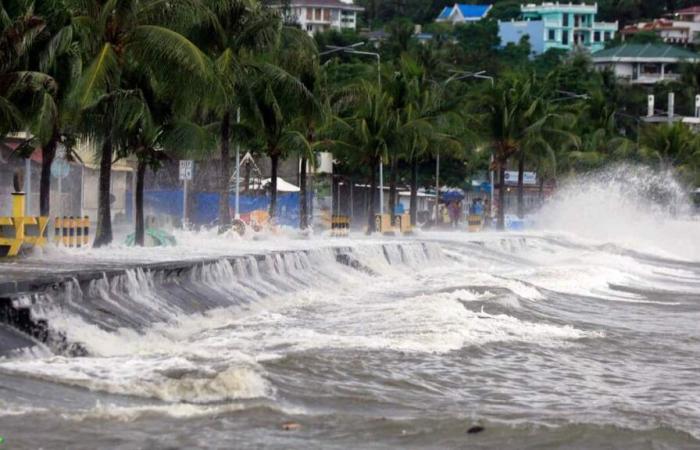The super typhoon Man-yi, which is heading towards the Philippines, is intensifying and could have a “potentially catastrophic” impact on the archipelago according to the meteorological services. Millions of people are threatened.
More than 650,000 people have fled their homes as the supertyphoon approaches with winds of up to 240 km/h and will make landfall late Saturday or early Sunday.
It will be the sixth major storm to hit the Philippines in a month.
Previous attacks have killed at least 163 people, left thousands homeless, destroyed crops and killed livestock.
“A potentially catastrophic and life-threatening situation looms in the northeastern Bicol region as supertyphoon Pepito further intensifies,” the weather agency said in its latest update, using the storm’s local name and referring to the southern part of the main island of Luzon.
On Saturday, the government called on the population to heed the warnings and take shelter.
“If a preventive evacuation is necessary, let’s do it and not wait for the hour of danger to evacuate or seek help, […] we will endanger not only our lives, but also those of our rescuers,” said Marlo Iringan, Undersecretary of the Interior.
In Albay province, Myrna Perea, her husband and three children found shelter in a classroom with nine other families after being ordered to flee their jailhouse.
It’s hot and the place is cramped. The family spent Friday night on a shared mattress under the single fan hanging from the classroom ceiling. But Mme Perea, 44, felt it was better to be safe.
“That’s why we left. Even if the house is destroyed, the important thing is not to lose a family member.”
Curfews and forced evacuations
In the island province of Catanduanes in the typhoon-plagued Bicol region, evacuation centers are filling up and the weather agency is warning of severe flooding and landslides.
The power was preventively cut there. The shelters were powered by generators.
More than 400 people crowded into the provincial government building in the capital Virac, with new arrivals sent to a gymnasium, provincial disaster official Roberto Monterola told AFP.
Mr. Monterola announced that he had deployed soldiers to force around 100 households in two coastal villages near Virac to head inland, for fear that the storm would submerge their homes.
“Regardless of the exact point of arrival, heavy precipitation, strong winds and storm surges may occur in areas outside the expected arrival zone,” the weather agency said.
The mayor of the city of Naga, in the province of Camarines Sur, imposed a curfew from noon on Saturday to force residents to stay at home.
A return “to the medieval era”
In Northern Samar province, disaster official Rei Josiah Echano says typhoon damage is causing poverty in the region.
“Every time we have a typhoon like this, it takes us back to the medieval era,” Mr. Echano told AFP.
All vessels, from fishing boats to tankers, have been ordered to stay in port or return to dock.
Nearly 4,000 people were stranded after the coast guard closed 55 ports.
Scientists say climate change is increasing the intensity of storms, leading to heavier rains, flash floods and more violent gusts.
Every year, around 20 major storms and typhoons hit the Philippines or its surrounding waters, killing dozens of people, but it is rare for several such weather events to occur in a short period of time.






